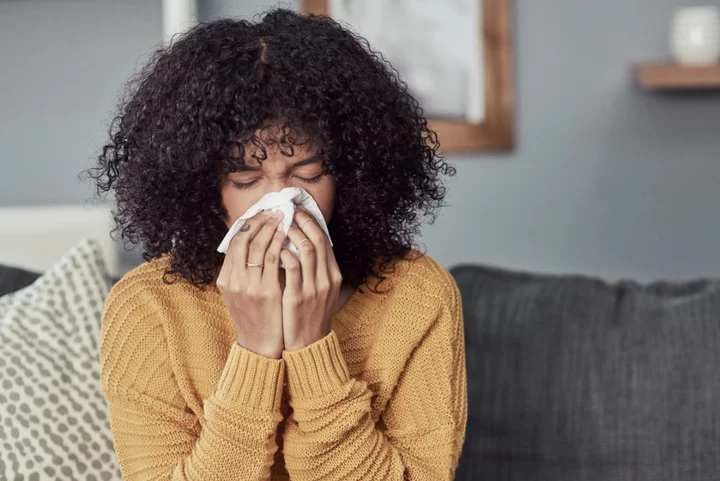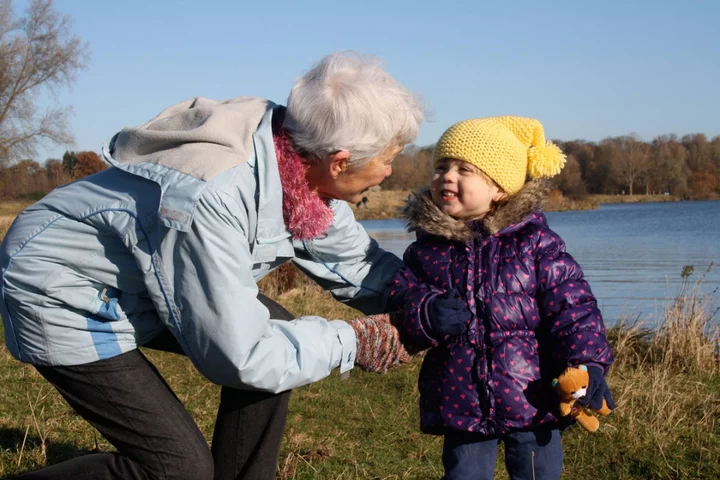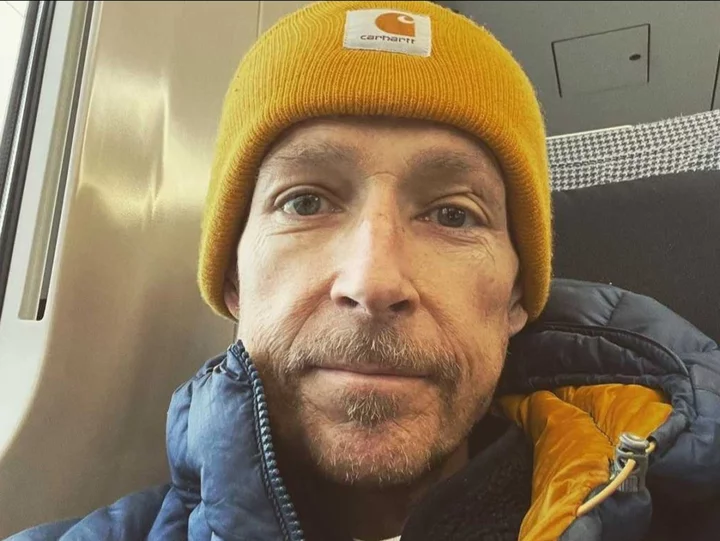
‘Unsupportive backgrounds’ make LGBT+ youth twice as likely to have suicidal thoughts – report finds
Young LGBT+ people who weren’t supported at home and school are more than twice as likely to have had suicidal thoughts and feelings than supported peers, a new report has found. Those from unsupportive backgrounds are also nearly twice as likely to have self-harmed, nearly half as likely to say they are happy in adulthood (43% vs 85%), and more than three times as likely to ‘never or rarely’ feel optimistic about their future – according to the findings from Just Like Us. The LGBT+ young people’s charity surveyed 3,695 people aged 18-25, including 1,736 LGBT+ young adults from across the UK. The ‘Positive Futures‘ report also found unsupported young LGBT+ people were significantly more likely to have experienced panic attacks and depression. What does an ‘unsupportive background’ mean? “An unsupportive time growing up can look like being bullied at school, never hearing that it’s OK to be LGBT+, facing family rejection and even estrangement, and not having any role models to look up to – all simply because you are LGBT+,” Amy Ashenden, Just Like Us interim CEO, told PA Media. “Sadly for lots of LGBT+ young people today, that remains a really gruelling reality. When we look at the research findings, we can see it’d be foolish to think growing up LGBT+ is not still incredibly tough.” How can you help support young LGBT+ people? Ashenden added: “Anyone who cares for and about young people has a role to play – whether or not you think they might come out as LGBT+ one day. We are calling particularly on parents, guardians and teachers to be more vocal in their support for LGBT+ people from the outset. “From the research, we know that LGBT+ young people wish they’d had these conversations from nursery age, which simply looks like saying: LGBT+ people exist and I support them. I’m proud to be an ally. “As a parent, you could mention a TV character or a person you know who is LGBT+ and you could mention how you admire their courage to be out and proud, or talk to them about how they are free to be who they are, different gender expressions included, and that you don’t agree with the harmful things sometimes said about trans people,” Ashenden said. Listening without judgement If a young person tells you they’re worried about coming out as LGBT+ and you’re unsure how to respond, remember there can be great value in just being a supportive listener. “The most important thing when a young person feels vulnerable or scared about coming out is providing a safe and supportive environment for that person to share their feelings, and to help them overcome their anxieties,” said Robert Common, an LGBT psychotherapist and founder/group CEO of The Beekeeper House. “Your role is to listen, and to allow them to express themselves without fear of judgement. You don’t need to be there to offer solutions – and be mindful of giving advice you’re not sure will be helpful or effective. You should remind them that they aren’t alone; there are many support groups and resources out there to help them.” Common added that ‘coming out’ isn’t just one conversation, either. For some young people, there may be anxiety about whether they will be accepted. “There’s a misconception that coming out is one big momentous point in time, but in reality, it’s a process. Although it shouldn’t be this way, the journey of acceptance can take a long time for some individuals, including family,” Common explained. “Young people in this situation should know that they should always come out on their own terms, whilst prioritising their safety and wellbeing. “If they do feel at risk from coming out to family, [gently encourage] them to talk through what the risks might look like and how to make contingency plans if they are faced with any kind of negative reaction or discrimination.” Signposting and community If a young LGBT+ person needs support and is facing difficulties, there are organisations that can help. Signposting them towards these can be a helpful step. For example, Common suggested: “The Albert Kennedy Trust (akt.org.uk), for LGBT young people who are homeless or living in a hostile environment. They can help with finding emergency accommodation as well as employment, education and training for those who need to support themselves.” Finding community can also be helpful – and “crucial for individuals that feel isolated or alone”, Common added. “The LGBTQ+ community is diverse, so when speaking to someone coming out, you can encourage them to see which parts of that community they identify with and relate to the most.” Many mental health charities like Mind (mind.org.uk) also offer specific advice for LGBTQ+ people, and the LGBT+ anti-abuse charity Galop (galop.org.uk) can provide support to those who have experienced violence or abuse. Read More Charity boss speaks out over ‘traumatic’ encounter with royal aide Ukraine war’s heaviest fight rages in east - follow live As Pride Month begins: 5 LGBTQ+ icons who have helped shape pop culture and history 10 ways to explain dementia to children How to make your home summer ready
2023-06-01 20:29

Dermatologist freaks viewers out after ‘catching’ mites that live in pores
A dermatologist has shared a video about the eight-legged mites called Demodex that live in our pores, which viewers have found either alarming or insightful. Dr Scott Walter, who is based in Denver, Colorado, posted a clip to the social media platform TikTok, in response to a prompt that asked: “What is something you found out late in life you should have known earlier but just didn’t?” Dr Walter’s first video, posted earlier this month, explained what the Demodex mites were. He began his video by describing them as “eight-legged creatures living inside the pores of your face right now”. The microscopic mites live in hair follicles and oil glands on the face, neck and chest, and feed on sebum and oil produced by pores. They are generally harmless, but too many can cause irritation and infection in the skin. Dr Walter has since posted two more videos about the mites after viewers were shocked and disgusted upon learning of their existence. In one video, he “catches” several mites that live on his own face and puts them under a microscope. The dermatologist explained that the Demodex mites live in “everyone’s faces”, adding: “Some people have more than others and that’s what [is] thought to contribute to the pathogenesis of rosacea.” Rosacea is a skin condition that occurs when round red spots and pustules appear on the face. Other symptoms include burning and stinging sensations, permanent redness and small blood vessels in the skin becoming visible. @denverskindoc ♬ original sound - Dr. Scott Walter MD | Derm Dr Walter continued: “Don’t believe me? I’m going to try and catch some of my own, like a Pokemon, next week and show you under the microscope.” The clip has been watched more than 10.5m times since he posted it and garnered thousands of comments from people who were thoroughly freaked out by the information about Demodex mites. “My whole face itches, how to get rid of them please?” one person asked. Another added: “This is one of those things I would’ve been fine not knowing about.” In a follow-up video, Dr Walter apologised for bringing viewers’ attention to the existence of Demodex mites. @denverskindoc Replying to @voice_of_hers can you treat Demodex? Here's how we do as dermatologists... But not everyone needs to treat it! #demodex #demodexmite #rosacea #folliculitus #todayilearned #newfriends ♬ original sound - Dr. Scott Walter MD | Derm “I am sorry I told you about Demodex,” he said. “Is your whole face itchy because of them? Probably not. But can you treat them? Yes.” He added that the mites also lay eggs on the skin and they can hatch even after treatment. “They’re our friends,” he said. “Accept them. They’re here to stay.” However, concerned viewers can treat Demodex mites if they have skin conditions like rosacea or severe folliculitis, which is when hair follicles become inflamed. Dr Walter pointed to topical treatments such as metronidazole, topical ivermectin, sulfer sulfacetamide washes and permethrin, as well as oral therapies that are used in more severe cases. His most recent video showed him fulfilling his promise to “catch” Demodex mites living on his own face and revealing them under the microscope. @denverskindoc Replying to @kaaat0709 Even I was not fully prepared for this: Demodex Mites: can I catch them all?! #demodex #demodexmite #rosacea #nerdingout #dermatologist #microbiology ♬ original sound - Dr. Scott Walter MD | Derm He did so by placing cellophane tape across his forehead and nose before going to sleep. The following day, he placed the stripes of clear tape under the microscope, which revealed three Demodex mites that had been living in his pores. Speaking over the video, he zoomed into one of the mites and said: “That right there is a Demodex mite and I’m kind of freaked out that I actually have them.” He zoomed in even further and showed the mite moving some of its legs, which indicated it was still alive. According to WebMd, small numbers of Demodex mites living in the skin can be beneficial as they remove dead skin cells and extra oil. People with skin conditions that cause irritation and inflammation should consult a dermatologist before beginning any treatments. Read More Fans praise Jay-Z for his dancing as daughter Blue Ivy takes the stage at Beyoncé’s concert Parents defend Nick the Fairy Godmother’s apprentice at Disneyland after viral video Woman stunned by response after putting her credit score on Hinge profile Dermatologist horrifies viewers by discussing mites that live in your skin ‘Unsupportive backgrounds’ make LGBT+ youth twice as likely to have suicidal thoughts – report finds The £4 hay fever tablet that ‘cures all symptoms’
2023-06-01 20:15

Petrobras Captures Carbon to Ramp Up Gas Production, and Calls It Green
Brazil’s state-controlled oil giant Petrobras is capturing and storing a growing amount of carbon dioxide below the seabed
2023-06-01 19:45

Noel Gallagher admits arena shows need a 'larger-than-life' singer like his brother Liam
Noel Gallagher prefers to hide behind his music and not interact with the crowd.
2023-06-01 18:59

Una Healy takes swipe at ex David Haye on new song after walking away from throuple
Una Healy has released a song about walking away from a relationship that is no longer serving you.
2023-06-01 18:50

Tallulah Willis opens up about father Bruce Willis' dementia diagnosis
Bruce Willis' daughter, Tallulah, has revealed her difficulties coming to terms with her father's frontotemporal dementia (FTD) diagnosis and shared details about its impact on her family's life.
2023-06-01 18:46

The popular £4 hay fever tablet that ‘cures all symptoms’
A brand of over-the-counter hay fever tablets are likely to be popular this summer after they were hailed a “miracle cure” by social media users. Several videos made by TikTok creators have recently gone viral after they discovered that Allevia, an antihistamine that retails for as little as £4, could relieve them of hay fever’s symptoms, which include sneezing, a runny nose, itchy eyes or throat and more. The tablets, which claim to provide relief from symptoms for 24 hours, were previously only available on prescription but were re-classified to general sales status by the UK’s Medicines and Healthcare products Regulatory Agency in December 2021. They are now available in most supermarkets and pharmacies. How is fexofenadine hydrochloride used? The active ingredient in the tablets is fexofenadine hydrochloride, which works by blocking the effects of histamine in the body, subsequently reducing symptoms such as itching and sneezing. Is Allevia any good? One TikTok user who was previously struggling with hay fever said all of her symptoms were “completely gone” after taking the tablet. Another shared an in-depth review of the effects of the tablets after a full day. After five hours of taking the medication, she said she hadn’t sneezed once. “This actually works. I’m impressed. My eyes are not bulging because they are itching. I feel good, I can enjoy the sun,” she said. She gave another update eight hours after taking the tablet, telling viewers that she had been out all day “around nature and plants” and still showed no symptoms. @tianarene1 it worked for me, but lmk your experience! Always read the leaflet to be safe! #allevia #alleviareview #hayfevertablets #hayfeversymtoms #hayfever ♬ original sound - Tiana René One Twitter user said: “Allevia has changed my life, what a drug.” “I have gone from having the worst hay fever you will ever see anyone have in your whole life, to feeling like I’ve never had it. Allevia, you have cured me,” a third person said. The popular tablets are stocked in most of the UK’s popular supermarkets, including Asda, Tesco, Morrison’s and Sainsbury’s. They are also available in Boots and Superdrug. Side effects of Allevia include headaches, dizziness, nausea and drowsiness. Read More Triathlete proudly shares ‘beautiful’ racing photo where she bled through swimsuit while on her period A Place In The Sun’s Jonnie Irwin admitted to hospital amid terminal diagnosis Parents defend Nick the Fairy Godmother’s apprentice at Disneyland after viral video Schoolboy almost dies from swallowing magnets for TikTok challenge Woman shares honest review of New York City apartment TikTok mom slammed after making 5-year-old son run in 104 degree heat
2023-06-01 18:19

A £4 hay fever tablet which ‘cures all symptoms’ is selling out
A brand of over-the-counter hay fever tablets are quickly selling out after being hailed a “miracle cure” by social media users. Several videos from TikTok creators have gone viral in the past week after they discovered that Allevia, an antihistamine that retails for as little as £4, could relieve them of hay fever’s symptoms. The tablets, which claim to provide relief for 24 hours, were previously only available on prescription but were re-classified to general sales status by the UK’s Medicines and Healthcare products Regulatory Agency in December 2021. The active ingredient in the tablets is fexofenadine hydrochloride, which works by blocking the effects of histamine in the body, subsequently reducing symptoms such as itching and sneezing. One TikTok user who was previously struggling with hay fever said all of her symptoms were “completely gone” after taking the tablet. Another shared an in-depth review on the effects of the tablets after a full day. After five hours of taking the medication, she said she hadn’t sneezed once. “This actually works. I’m impressed. My eyes are not bulging because they are itching. I feel good, I can enjoy the sun,” she said. She gave another update eight hours after taking the tablet, telling viewers that she had been out all day “around nature and plants” and still showed no symptoms. @tianarene1 it worked for me, but lmk your experience! Always read the leaflet to be safe! #allevia #alleviareview #hayfevertablets #hayfeversymtoms #hayfever ♬ original sound - Tiana René The popular tablets are stocked in most of the UK’s popular supermarkets, including Asda, Tesco, Morrison’s and Sainsbury’s. They are also available in Boots and Superdrug. Due to high demand, at the time of writing they are sold out on the Boots, Asda and Tesco websites. People have also praised the effects of Allevia on Twitter. “Those that suffer from hay fever, stop using the Piriteze tablets and buy Allevia tablets – it will stop your sneezing or throat itching within seconds,” one person wrote. Another said: “Allevia has changed my life, what a drug.” “I have gone from having the worst hay fever you will ever see anyone have in your whole life, to feeling like I’ve never had it. Allevia, you have cured me,” a third person said. Side effects of Allevia include headaches, dizziness, nausea and drowsiness. Read More Schoolboy almost dies from swallowing magnets for TikTok challenge Woman shares honest review of New York City apartment TikTok mom slammed after making 5-year-old son run in 104 degree heat The £4 hay fever tablet that ‘cures all symptoms’ 6 mouth cancer symptoms everyone should know Breast cancer symptoms and survival rate as Amy Dowden diagnosed
2023-06-01 18:18

10 ways to explain dementia to children
Dementia is very hard for adults to understand – so imagine how perplexing it must be for a child. Not only does a close family member like their grandma or grandpa start forgetting things, but dementia – the most common form of which is Alzheimer’s – can mean those affected have problems with planning, decision-making and language, as well as changes in their mood and behaviour. And they’re only going to get worse. But how do you explain all this to a child? “Finding out someone close to you has dementia is difficult for everyone, and we all need time to adjust and come to terms with our feelings,” says Dr Tim Beanland, head of knowledge management at the Alzheimer’s Society. “Children and young people are no different, but it can be harder for them, as they may not properly understand what dementia is, or they might find it harder to cope with their feelings. “One of the most important approaches is to listen to the concerns of the young person or child. It’s very important to try to get a sense for how much they can cope with, and tailor the discussion accordingly.” Here are Beanland’s suggestions for how to explain dementia to a child… 1. Explain what dementia is Make sure you know the facts about dementia, and convey at least some of what you know to your child, in an age-appropriate manner. “Explain as clearly and calmly as possible, at a level that the child can understand,” advises Beanland. “Try to get a sense of how much detail they can cope with.” 2. Be clear and honest Try to be as honest as you can, offering clear explanations and plenty of reassurance, Beanland says. “It’s important to make sure they know they can ask questions any time they need to.” 3. Acknowledge the affected person’s behaviour Talk about the behaviour of the person with dementia, for example if they’re forgetting where they are, or not recognising family members, says Beanland. Make sure your child knows you understand the behaviour may seem strange to them. 4. Listen carefully to what children have to say Try to imagine the situation from your child’s point of view, suggests Beanland. “Think about their relationship with the person with dementia – this will help you find out if they’re worrying about something specific,” he says. 5. Be patient You may need to repeat your explanations on different occasions, depending on the age and level of understanding of the child. 6. Tell the school If your child is at school, it’s often a good idea to let staff know that your relative has dementia, says Beanland. That way, if the child’s behaviour is affected at all by what’s happening with their relative, teachers may realise what’s triggering the behaviour. 7. Remind children you’re still there for them It’s important to reassure children that others are still there for them, says Beanland. “They need to know that, despite all the pressures, they are still loved – however preoccupied or frustrated other people may be sometimes.” He says this can help to provide opportunities for them to talk about any concerns they might have. “Give the child plenty of reassurance and hugs, and don’t be afraid to use humour, if it feels appropriate,” Beanland says. “It can help if you can laugh together.” 8. Get the person with dementia to talk to the child about their diagnosis if possible If the person with dementia has received an early diagnosis, or has a form of dementia that doesn’t initially affect their understanding and communication, they may be able to talk about their diagnosis to a child themselves. “This can potentially be a good way of reducing fear and maintaining a positive relationship,” says Beanland. 9. Let them know you are there Encourage the child to ask any questions they have, and let them know they can always talk to you without being judged. “You could also set aside a regular time to talk or do activities together when they can speak with you alone,” suggests Beanland. 10. Talk about living well with dementia Once you’ve explained as well as you can what dementia is and what’s happening to your loved one, try to be positive about their remaining abilities. “Focus on the things that the person with dementia can still do, as well as those that are becoming more difficult,” Beanland suggests. Read More Charity boss speaks out over ‘traumatic’ encounter with royal aide Ukraine war’s heaviest fight rages in east - follow live How to make your home summer ready Jetting off this summer? Doctors share essential in-flight health tips How do heterosexual celebrities become LGBTQ+ icons?
2023-06-01 15:49

Khloe Kardashian says what she thought was a zit turned out to be melanoma
Khloe Kardashian has revealed that what she thought was a zit on her face turned out to be melanoma. Kardashian, 38, and her family navigate the implications of the diagnosis during the latest episode of The Kardashians, a Hulu series that follows the high-profile members of the celebrity Kardashian-Jenner family. “Khloe has a little bit of a history with melanoma and cancerous lesions, so this on her face is very concerning to me,” Khloe’s mother Kris Jenner, 67, says to her step-sister Kylie Jenner, 25, during the episode. Kylie responds that her older sister had “this little bump and she was trying to remove it, and she’s like, ‘it just won’t go away,’ so to find out it’s melanoma is obviously really scary and I just hope that everything’s gonna be OK.” Kardashian decided to have a biopsy on the bump on her face, despite thinking it was a “zit”. “I have done one biopsy on this bump that I just assumed was a zit, turns out it’s not a zit,” she says during the episode. “It’s melanoma and for my age, it’s incredibly rare.” Melanoma is a type of skin cancer that can spread to other areas of the body, according to the NHS. The main cause of melanoma is ultraviolet light, which comes from the sun and is used in sunbeds. “Melanoma is deadly,” Kardashian said in a trailer for the show. “This is way more serious than I anticipated it to be.” Factors that increase the chances of getting melanoma include age and having pale skin, a large number of moles and a family history of skin cancer. Karshasian first opened up about her skin cancer scare in October 2022 and shared the news on her Instagram Story, featuring close-up photos of her skin. She said at the time that she was “grateful” that the margins now “appear clear” and she was in the “healing process”. “So, here we are… you’ll continue to see my bandages and when I’m allowed, you’ll probably see a scar (and an indentation in my cheek from the tumour being removed) but until then I hope you enjoy how fabulous I’m making these face bandages look.” Kardashian also urged her followers to get frequent checkups by recounting a past incident where doctors found a cancerous mole on her back. “At 19 years old, I had melanoma on my back, and I had a surgery to remove that as well, so I am pre-composed to melanomas,” she said of that experience. “Even those who are not, we should be checking all the time.” “I am someone who wears sunscreen every single day religiously so no one is exempt from these things. Please take this seriously and do regular self-exams as well as your annual checkups.” The Kardashians season three is streaming on Hulu now. Read More Triathlete proudly shares ‘beautiful’ racing photo where she bled through swimsuit while on her period Parents defend Nick the Fairy Godmother’s apprentice at Disneyland after viral video Jodie Marsh takes swipe at Phillip Schofield years after heated This Morning clash Khloe Kardashian praised for ‘honesty’ after opening up about surrogate pregnancy Khloe Kardashian’s best friend appears to confirm name of reality star’s son Khloe Kardashian criticises ‘narrative’ that she’s dating ex Tristan Thompson again
2023-06-01 15:47

Hamilton's Thomas Kail to direct live-action Moana for Disney
Thomas Kail is set to direct the live-action version of 'Moana'.
2023-06-01 15:29

A Place In The Sun’s Jonnie Irwin admitted to hospital amid terminal diagnosis
Jonnie Irwin has revealed that he has been admitted to hospital as he deals with terminal cancer. The Escape to the Country presenter, 49, said in November that he “doesn’t know how long” he has left to live, after first being diagnosed with lung cancer in August 2020, which later spread to his brain. He went public with his diagnosis in November 2022, after keeping it a secret from his fans for more than two years. Since his announcement, Irwin has been keeping his social media followers up to date with his condition. In the latest update, the father-of-three revealed he has gone into hospital to be “monitored” but hopes to be released in time for a scheduled appearance at A Place In The Sun Live in London this weekend (2-4 June). He wrote in an Instagram post: “In hospital this week monitoring a changeover in my pain management regime.” “Fingers crossed I’ll be out in time to make an appearance on Sunday for this weekends @aplaceinthesunofficial LIVE event at @olympialondon in Kensington,” he continued. If he is released from the hospital and attends the event, Irwin will be joined on stage by fellow presenters Jasmine Harman, Ben Hillman and Laura Hamilton. He concluded the post: “Hope to see you there…x.” In a new podcast OneChat released last week, Irwin said that he was living under a “dark cloud” for the two years he hid his cancer from the world, adding that he kept his condition a secret so that he could continue working and “provide” for his family. Irwin and his wife Jessica have three children; three-year-old son Rex and two-year-old twins Rafa and Cormac. Elsewhere in the interview revealed that he had been close to death’s door “at least twice”, emphasising that he prefers to think of his situation as “living with cancer, rather than dying from cancer”. Irwin explained how he began to feel “alive” again after going public with his illness, but noted that didn’t mean his journey had been easy. “I have been close to death’s door, twice at least,” he said. He added: “You lose your memory, you lose your patience. I have got a very short temper. It’s not made me a better person, that’s for sure.” In March, Irwin gave a health update, telling The Sun: “I’m weak now, fragile and my memory is terrible… but I’m still here.” Read More Triathlete proudly shares ‘beautiful’ racing photo where she bled through swimsuit while on her period Parents defend Nick the Fairy Godmother’s apprentice at Disneyland after viral video Jodie Marsh takes swipe at Phillip Schofield years after heated This Morning clash 5 myths about lung cancer everyone needs to stop believing Jonnie Irwin says he’s been ‘close to death’s door twice, at least’ Jonnie Irwin says going public with cancer diagnosis was when he began ‘living again’
2023-06-01 14:45
